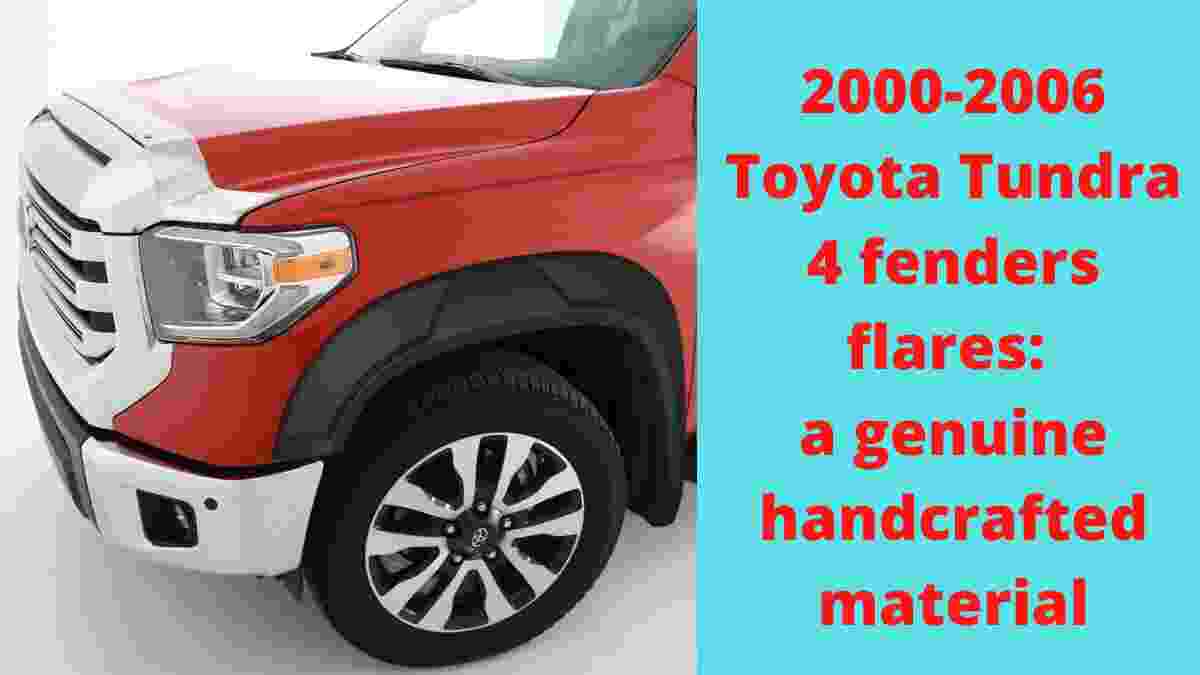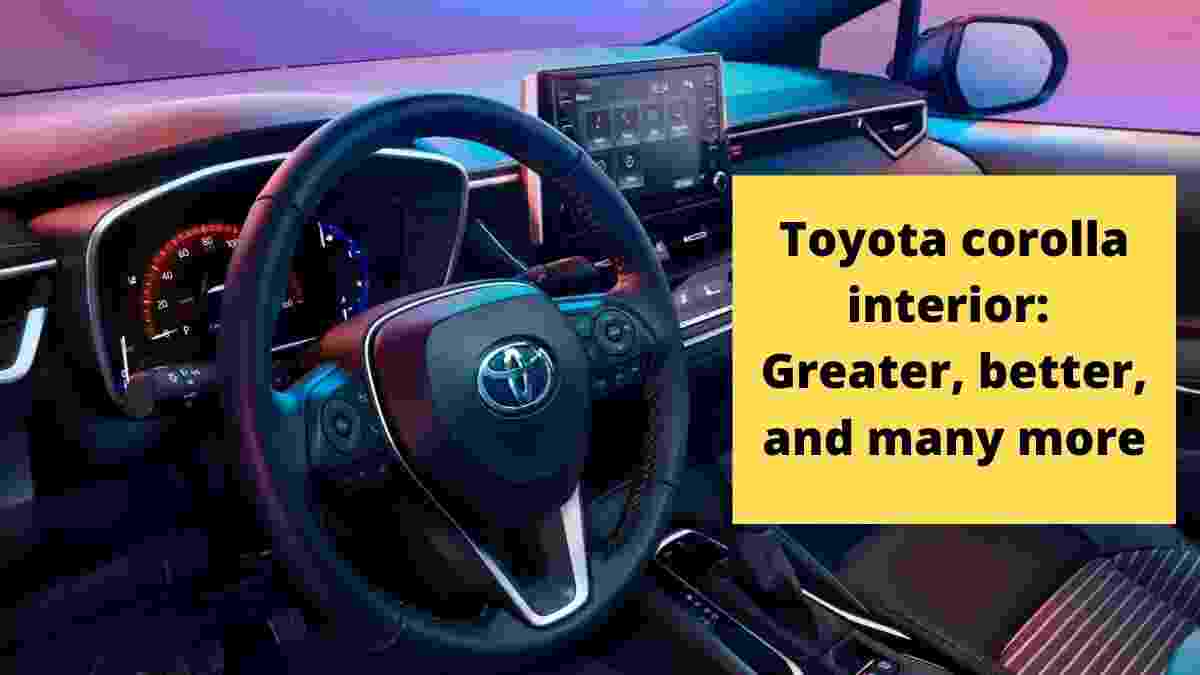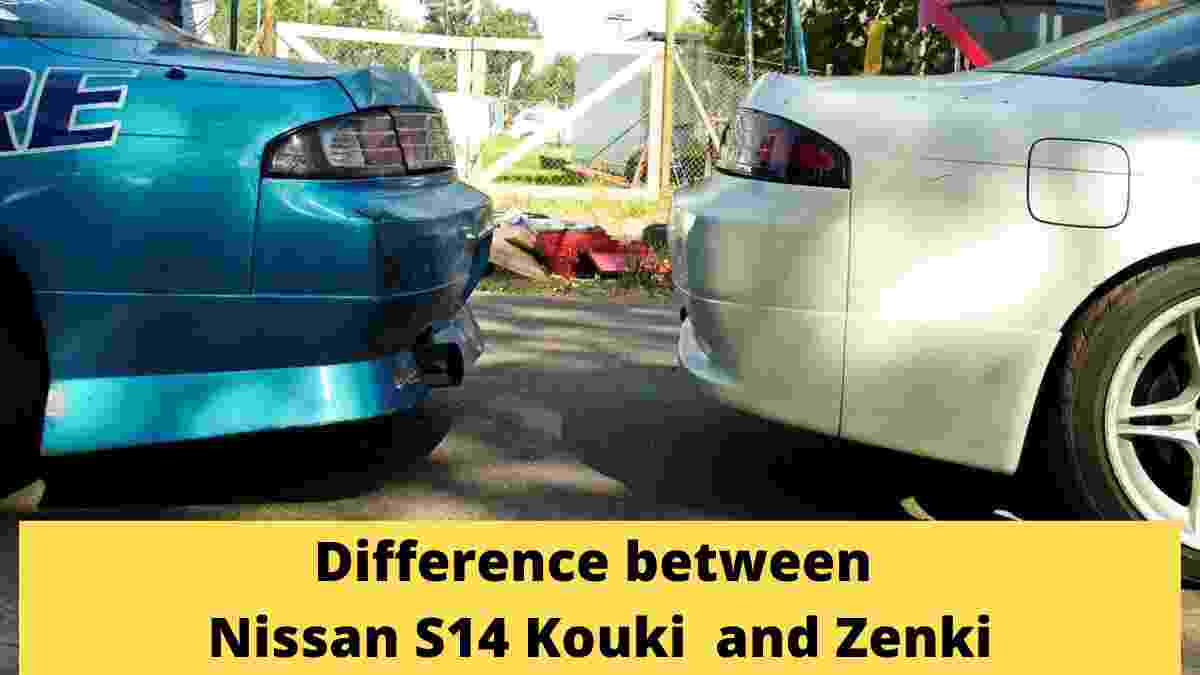
S14 Kouki and Zenki:
S14 Kouki
The Nissan 240SX S14 Kouki is one of the most iconic Japanese sports cars. It was first introduced in 1989 and has been a mainstay in drift racing and Autocross ever since. The latest iteration, the S14 Kouki, is a heavily modified version of the original car.
Zenki
The Zenki is a modified version of the S14 designed by Tetsuya Tada, the chief designer at Nissan’s R&D division.
Zenki and kouki are the same car
Zenki and Kouki are two Japanese words that distinguish different models of the same car. These terms stand for “Early Period, and “Late Period,” in that order. When they talk about an automobile, they imply the same chassis. S13 and S14 are neither kouki nor zenki to one another but are entirely distinct. There is always a comparison between both models. There are many websites featuring S14 Zenki vs. Kouki.
1989 marked the North American debut of Nissan’s 240SX sport compact car. It debuted in 2007 as a successor for the 200SX (S12). Between 1989 and 1990 and 1990 to 1998, the 2.4-liter inline-4 engine was available for 240SX models.
KA24DE had two overhead cams, KA24E had one. The Nissan S-platform-based 240SX had two generations. The S13 (1989-1994) and the S14 (1994-1998). The 240SX has many similarities with other vehicles on the S platform. For example, the Japanese-market Silvia, 180SX, and 200SX.
This vehicle does not have any relation to the 240Z or 280ZX. It is still popular among drifters and tuners even though it is no longer manufactured. The Nissan S14 may be seen in various video games, including Midnight Club and Forza Motorsport. Due to its popularity in drifting competitions. But, due to the S-chassis’ popularity, the cost of auto parts has risen.
The Insane Ability of the Nissan Silvia S14 Kouki
Nissan S14 Kouki is a variant of the Silva S14. It is one of the most competent vehicles of its time. Without a doubt, Nissan produces one of the best cars in the world. Especially the Silvia 14 comes in two variants, Zenki S14 and Kouki S14.
The S14, a vibrant sports car, was an influential car on the Nissan S-platform. The S14 is a JDM vehicle that deserves recognition for two unique characteristics. First, this car’s stunning look and compactness made it unrivaled.
The S14 was a significant advance over the S13, as the car was restyled and made more comprehensively in 1993. The S14 established a practical effect in the drifting race sector. It is immediately incorporated into Japanese society. Cars built before 1996 are known as Zenki S14, whereas those made after the update are known as Kouki S14. (Zenki and Kouki are Japanese for “before” and “after,” y.) As more pragmatic SUVs expanded in the market in the late 1990s, 240SX sales dropped.
S14 KOUKI FEATURES – NISSAN 240XS S14 ZENKI VS. KOUKI:
Exterior of S14 Kouki
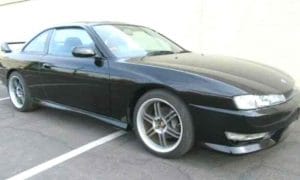
The exterior of the S14 Kouki is quite aggressive. Front and rear strut braces are available. The 350z front Brembo brakes add to its allure. There are also Apexi Gen 2 coilovers and adjustable arms. Kouki is one of the cars that may customize. For example; Bomex side skirts, Front Bumper fast release, Dewipered rear, Jap pressed plates, 20mm and 25mm spacers, Dmax roof spoiler, Genuine Kouki spoiler with custom lip, Custom front splitter, 50mm Rear quarters,30mm Vented wings, 5Zigen RS1 wheels 18×10 et 25.
The majority of Kouki have Polybushed and Tinted S14a Headlights. The Kouki rear lights have four pieces and are readily available on the market.
Exterior of Zenki
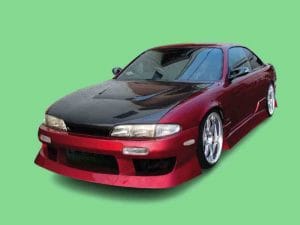
Zenki’s exterior is also magnificent. But compared to Kouki’s, its body is not quite aggressive looking. The lights are different, especially the rear lights. The overall appearance of the rear lights differs from Kouki’s.
The newly built Kouki received a much more aggressive front Look with a slimmer hood, front bumper, fenders tinted back tail-lights, and sharper headlights. The media made him look like he was about to stalk you down. Kouki received a revised center console and a more modern ball-bearing turbo engine.
The s14 Nissan 240sx Silvia Zenki and Kouki are the exact vehicle. The distinction is solely in appearance. There appear to be minor, if any, technical differences between the two. Both are fantastic for drifting and customizing.
When looking at the front of the Nissan 240 sx automobile, commonly known as the Silvia S14, you can compare Zenki and Kouki. In the context of the S14, the 1995-96 model is the zenki, or earlier period, S14, with the curving front side and only one interior variant. 1997-98 kouki, or later period, S14 has a sharper, more assertive front appearance and a slightly modified interior. The contrast between the headlights and hood curvatures: spherical headlights and form on the Zenki. The Kouki has more powerful headlights.
The Interior of S14 Kouki and Zenki:
The interior of S14 Kouki is way better than Zenki since it’s a facelift version of Zenki. Zenki S14 interior more appears as a family car. Kouki’s interior gives vibes of a racing car.
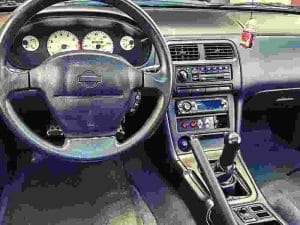
With a sleek black tone, the interior of the Kouki is still comparable with modern vehicles. Kouki’s interior presents the appearance of a racing car. Come inside, and you’ll find a feast of JDM goods. They have a hydraulic hand-brake, which immediately draws your attention.
The center console has a Blitz turbo timer, while the dashboard and pillars have Apexi dials. Patchwork mats captivate me.
The driver is well taken care of, with a broad dish OMP steering wheel and a set of Recaro Confetti SR2s, making this a nice car to drive. The base model came standard with 4-lug, 15-inch wheels, a softer suspension, and no rear sway bar. Replaced automatic seat belts with standard manual seat belts, and dual airbags were inserted. In place of the pop-up lights, a permanent headlight has been added. The cup holders have also been removed. Although the overall layout remains the same, most parts have been updated to the point that only a few are interchangeable.
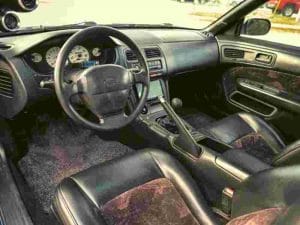
Leather interior, ABS, and a dynamic limited-slip axle were among the options and equipment offered for the baseline model. In addition, the models had 5-lug, 16-inch alloy wheels, firmer chassis than the baseline model, and a rear sway bar. The Kouki was essentially an enhanced Zenki model. That included more specifications like leather seats, anti-theft technology, and a CD player. In addition, the base and models may be equipped with anti-lock braking and a stiff limited-slip gearbox as an extra option.
Engine:
Few casual passers would guess the automobile they were looking at was named for their Gran. Because it was turbocharged, rear-wheel drive, and observed going sideways. The fifth-generation Nissan Silvia was sold in the UK as the 200SX. But this modestly-looking coupe had some severe sporting credentials.
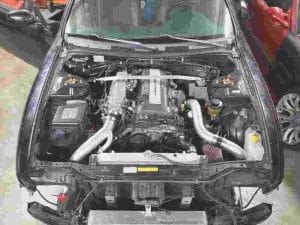
The 240SX was a powerful opponent to the dominant German products, with a seven-second 0-60 performance and a superbly balanced chassis. The 240SX is still a superb little sports coupe after 20 years. They are robust and easy to alter, transforming them into simple track machines. Which the drifting community has been taking advantage of for some time.
A distinct engine powers the S14 Zenki. In Japan, the SR20DE engine or the more robust SR20DET engine is available in two color schemes. “Red Top” or “Black Top” (color of the top engine). There is only one engine to hand for the US market: the KA24DE.
Can their Engines Swap?
The further you drift, the more likely you will damage your car. It could be only the front bumper or worse, and you will have to replace the engine. If the distinctions between kouki and zenki are only superficial, shouldn’t this be simple? So, you believe a Zenki and a Kouki are identical? Think again if you’re planning an engine switch for a car refurbishment. Like many drift vehicle lovers, you must assemble all your paychecks and extra time to go for an engine change.
- With the electrical cabling challenge: minimal hardware compatibility between a Zenki and a Kouki.
- The engine and tailpipes do not fit perfectly and will require some adjustment.
- The connections: parts are pretty tricky to come by these days, and you will only get JDM parts or parts from foreign nations with various links. Best wishes
S14 Kouki common issues:
Worldwide, there is a solid S14 Kouki forum, and spares and additional upgrades are extremely easy to get. Many automobiles have been ridden hard and are recognized for their powerful performance and flexible ductility, so undertake a comprehensive inspection of the powertrain parts to ensure it’s in good shape. It is elementary to get 30-40bhp from a conventional engine, and many will have been rebound to do so.
Although the engines are sturdy, they might suffer from excessive camshaft wear, notably if regular oil changes are omitted. A noise on initiation could suggest a worn VVT (variable valve timing) system, which is very typical but should be addressed before it worsens. Clutches and gearboxes usually handle increased power nicely but crunching while hitting gear could state worn synchros.
These automobiles are now 20 years old, and the turbochargers may show signs of wear. Blown gaskets are typical, and heavy blue smoke and oil seeping from the turbo manifold indicate that the turbocharger unit has burst. Blown turbo gaskets can also cause the car to sound extremely loud at idle. In addition, exhaust manifolds are a vulnerable location that can leak; most would have been replaced by now, and non-standard installations are relatively frequent. Check to see if the vehicle has a catalytic converter, as these components are often missing from used vehicles. While this may improve performance and extend the service life of your turbocharger, obtaining MoT may be difficult.
Cost:
The used S14 market is classified into three categories. Standard (very rare), customized, and completely changed. Standard models are generally automatics. And cost roughly £4500, yet as before said, mint cars (particularly manuals) can fetch upwards of £10,000.
The modified cars often feature modest to the wild engine and chassis alterations. However, most owners are educated, and a modified S14 can be a low-cost performance monster if the work is done well. Cost varies from £2000 for a high-mileage car in poor condition to £8000 for the following facelifted models.
Kitted drift systems are outside our guidance. Costs vary based on the equipment fitted. And it is worthwhile to consult with a competent specialist before making a buy.
The S14 Nissan 200SX, either stock or customized, is an excellent everyday driver or vacation fun. They are a timeless masterpiece for the driving fan on a cheap because they are simple to maintain and alter.
CONCLUSION:
Nissan S14 Kouki is a Silva S14 variation. Restyled and widened in 1993, the S14 was an improvement over the S13. Zenki and Kouki are Japanese terms that mean “before” and “after.” Zenki and Kouki are the same s14 Nissan 240sx Silvia. There appears to be a minor if any, the technical distinction between the two. The inside of Kouki resembles that of a race car.
Both are excellent for drifting and customization. A unique engine propels the S14 Zenki. The SR20DE engine or the more powerful SR20DET engine is also available in Japan. It is available in two color schemes: “Red Top” and “Black Top” (color of the top engine). The used S14 market is divided into three types. Standard (very rare), customized, and altered.
The price ranges from £2000 for a low-mileage car in poor condition to £8000 for later face-lifted variants. The cost varies depending on the equipment installed. Before buying, consult an expert.






